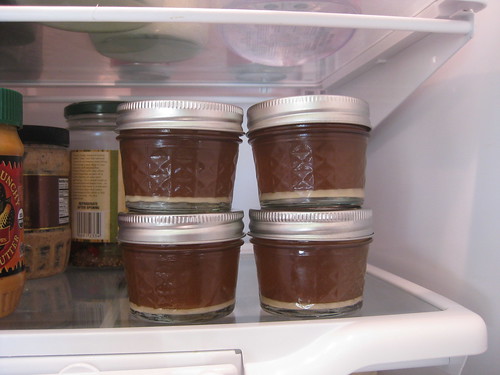karmabrew
Well-Known Member
I've got a question. I brew 5 gallon batches, should I just use 2 pint mason jars to store the washed yeast, or can I use the 4 like Bernie does?













That would be enough for a 5 gallon batch (1 half pint jar)?
Yep. Whenever you want to make a starter (not completely necessary, but advised,) bring to room temperature, pour off 90% of the beer colored liquid, swirl around, then pitch.
Sure. But use a starter.
I disagree. Make a starter. No ifs ands or buts. make a starter.

I have a yeast cake which has been sitting in the primary for a few days - the beer has racked off it. Its been sealed and kept sanitary - how long can I wait before washing the yeast ?
Great - thanks. I ended up washing it and it looks and smells fine.

Is there an optimum time period for a starter ? I have read 2-3 days are the best ..is a lesser time a violation ?
I was wondering this this weekend...I had planned to try to make a starter on Thursday night so I cld brew Sat or Sunday. Of course, I forgot to make the starter.
I guess it doesn't matter this weekend, since I took a direct hit at a birthday party last night, so no brewing anyway today for me...still in recovery mode..(but they all loved my beer)
Anyway, is there any plm with making a starter one day and brewing 24 hours later ? I should know by then if the yeast are viable, at least.
Is there an optimum time period for a starter ? I have read 2-3 days are the best ..is a lesser time a violation ?
I was wondering this this weekend...I had planned to try to make a starter on Thursday night so I cld brew Sat or Sunday. Of course, I forgot to make the starter.
I guess it doesn't matter this weekend, since I took a direct hit at a birthday party last night, so no brewing anyway today for me...still in recovery mode..(but they all loved my beer)
Anyway, is there any plm with making a starter one day and brewing 24 hours later ? I should know by then if the yeast are viable, at least.



similar question to mikeysab--This was my first attempt at yeast washing. It may be hard to see in the attached picture, but I think I failed in not disturbing the trub too much. You can see a lot of gunk at the bottom and a thin yeast layer--these were supposed to be my "final" jars. Can / should I sanitize some more jars in iodophor (while I brew today, it would be fairly easy) and then decant again? The jar on the far left looks better than the others--the rest have a distinct dark layer at the bottom and a thin layer of lighter color above that. Or should I just let it be? thanks for any advice!

